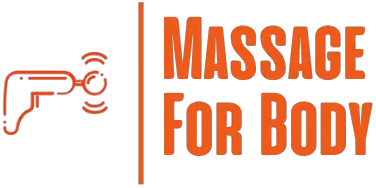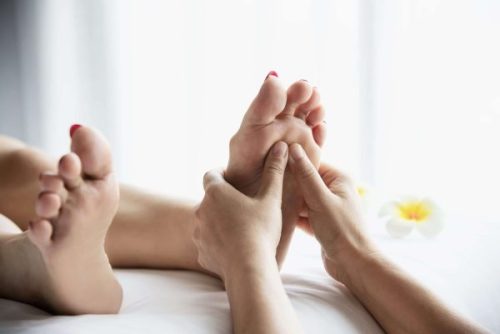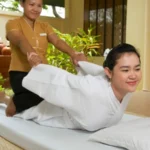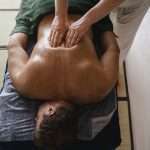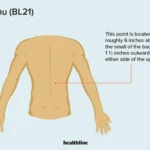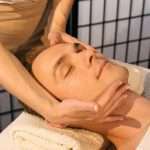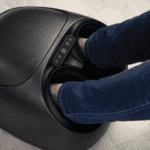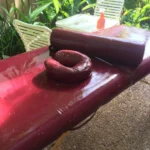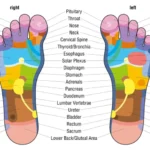There’s a moment in every great foot massage when the body finally exhales — that soft release when tension melts, circulation awakens, and the mind follows the rhythm of your hands. It’s in that moment you understand why learning how to give a good foot massage is such a powerful skill: it brings comfort, restores balance, and offers a kind of relaxation that reaches far beyond the feet.
Whether you’re easing someone’s tired steps at the end of a long day or treating your own sore arches, a well-delivered foot massage doesn’t just soothe — it helps the entire body soften, reset, and breathe again.
Table of Contents
Why Foot Massage Works
Foot massage is one of the simplest ways to influence the entire body. The feet contain thousands of nerve endings, dense connective tissue, and pressure points linked to different systems. When stimulated, they help:
- Lower stress by activating the parasympathetic nervous system
- Improve circulation, especially in people who stand all day
- Loosen tight fascia in the arch and heel
- Support sleep, digestion, and emotional relaxation
- Ease symptoms related to plantar fasciitis or general fatigue
- Improve mobility throughout the lower body
A truly good foot massage blends technique with presence — the hands listen as much as they work.
✨ Quick-Start: 5-Step Foot Massage (Fast Relief)
🧼 1. Clean & Prep Feet
Soak the feet in warm water, pat them dry, and get your massage oil ready. A great foundation for anyone learning how to give a foot massage.
🧠 2. Warm Up
Use light strokes and gentle ankle rotations to loosen tension.
💧 3. Apply Oil or Lotion
Warm the product between your hands before smoothing it over the foot.
👣 4. Use Massage Techniques
Try thumb walking, kneading, toe stretches, and pressure point holds.
🌿 5. Cool Down
Finish with light strokes up the foot and wrap in a warm towel.
Once the feet feel warm and receptive, move into the deeper, more therapeutic massage below.
💡 Want to target pressure points? Jump to reflexology tips

The Benefits of Foot Massage
A well-done foot massage goes beyond just feeling good—it offers real health benefits. When you understand how to give a foot massage, you unlock a variety of health perks:
1. Reduces Stress & Promotes Relaxation
Foot massages help activate the body’s relaxation response, reducing stress hormones and promoting a sense of calm. Studies even show they can lower cortisol levels and improve mood.
2. Boosts Circulation
Massaging the feet stimulates blood flow, ensuring that oxygen and nutrients reach all areas of the body. This is especially helpful for people with diabetes or circulation issues.
3. Relieves Foot Pain & Muscle Soreness
If you experience foot pain from standing all day, plantar fasciitis, or general soreness, a deep foot massage can help ease tension. Using an EMS or Shiatsu foot massager can further enhance relief.
4. Improves Sleep
Massaging the feet before bedtime can activate pressure points that promote deeper sleep and relaxation.
5. Supports Detoxification
A foot massage stimulates the lymphatic system, which helps flush out toxins and reduce swelling in the legs and feet.
6. Encourages Reflexology Benefits
In foot reflexology, different areas of the foot are connected to various organs. Massaging these pressure points can help improve digestion, boost energy levels, and promote overall health.
7. Enhances Mobility & Flexibility
Regular foot massages help loosen tight muscles and improve flexibility, making everyday movements like walking and running easier.
🏠 Prepare for a Great Foot Massage
Create a Calming Space
Choose a quiet area, dim the lights, or play soft music. A cozy blanket or elevated leg support helps the person fully relax.
Gather What You Need
Light lotion or oil (almond, coconut, grapeseed), a towel, and optional tools such as a foot soak, Epsom salts, or a massage ball.
Warm the Feet
Warmth softens the tissues and boosts circulation. A 5–10-minute soak or warm towel wrap is ideal before starting.
👣 How to Give a Good Foot Massage: Full Technique Guide
A foot massage works best in a natural sequence: warm, deepen, release, restore.
Step 1: Warm Up the Feet
Hold the foot with both hands and begin with slow strokes from toes to heel. Rotate the ankle gently, sweeping your thumbs along the arch and heel to awaken circulation and prepare the tissues.
Step 2: Apply Oil or Lotion
Warm a small amount between your palms, then massage it across the entire foot — the heel, arch, toes, and ankle. Choose a non-greasy oil such as grapeseed or jojoba for ideal glide.
Step 3: Perform Core Massage Techniques
Thumb Walking
Use alternating thumb pressure from heel to toes, moving slowly to target firm or tender areas — especially along the arch.
Knuckle Kneading
Curl your fingers and use your knuckles to create circular pressure across the sole. This is excellent for tight arches, plantar fasciitis, and long days on your feet.
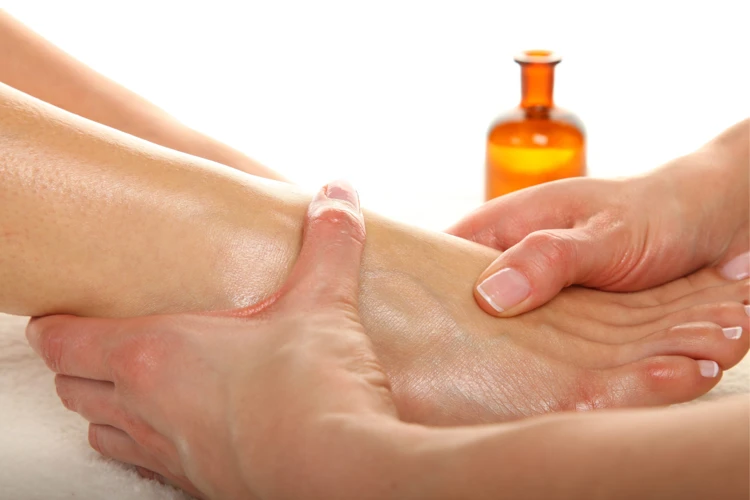
Toe Mobilization
Stretch, rotate, and gently pull each toe. Work the spaces between toes to release small-joint tension.
Heel & Ankle Release
Use the heel of your hand to massage the heel, then glide fingers around the ankle bone while gently rotating the foot to increase mobility.
Step 4: Reflexology Pressure Points
Reflexology adds a deeper therapeutic layer. Apply slow, steady pressure — not a sharp jab — to the following points:
| Foot Area | Linked Organ/System |
|---|---|
| Ball of the foot | Lungs, chest, heart |
| Arch (mid-foot) | Liver, stomach, kidneys |
| Heel | Lower back, sciatic nerve |
| Big toe | Brain, head |
| Base of toes | Sinuses |
Hold each point for 5–10 seconds to deepen the effect.
🧍♀️How to Give Yourself a Foot Massage
Self-massage is incredibly effective and requires no equipment. Sit comfortably with one foot resting on the opposite thigh. Apply lotion and knead the arch using your thumbs. Stretch and rotate each toe. Use slow circular pressure on the heel. Finish by rolling a massage ball or frozen water bottle under the foot to release tension.
Even 3–5 minutes per foot can make a noticeable difference.
❤️ Foot Massage for Your Partner
Massaging a partner offers relief and emotional connection. Ask them to rate pressure from 1 to 10, aiming for a comfortable 4–6. Work slowly and consistently. Save your lightest, most soothing strokes for the end. Wrap the foot in a warm towel or slip on soft socks afterward. Consider calming oils like chamomile, lavender, or ylang-ylang to elevate the experience.
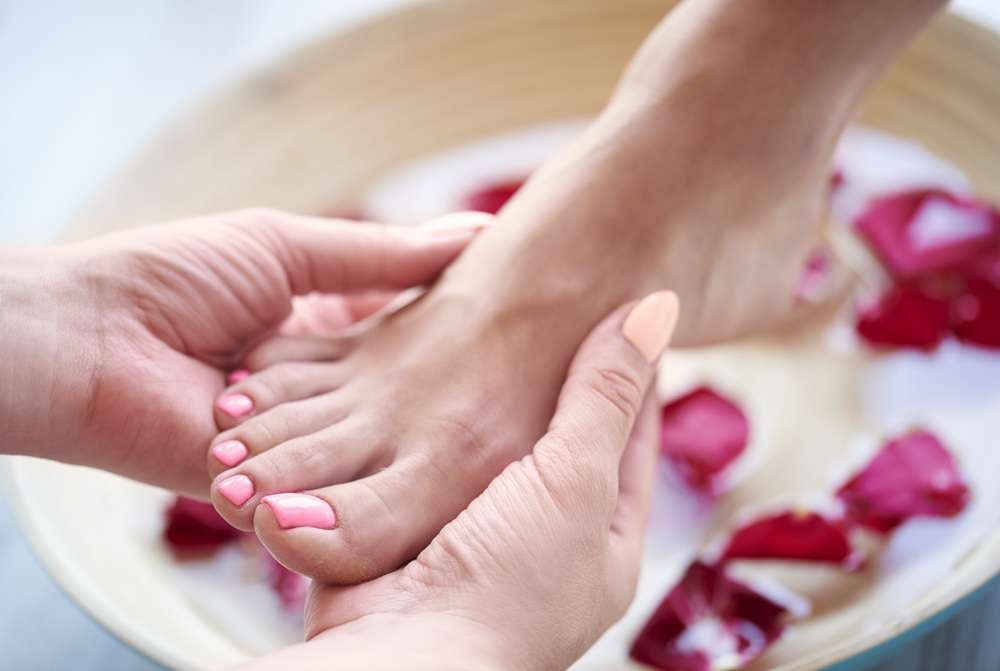
Enhance the Experience with a Foot Massager
If you want to take your foot massage to the next level, consider using a foot massager. Devices like EMS foot massagers, Shiatsu foot massagers, and heated foot massagers can provide deeper relief and added relaxation.
👉 For a breakdown of the best options, check out our detailed guide on the best foot massagers.

❓ FAQs About Foot Massage
How long should a foot massage last?
10–20 minutes per foot is ideal. A shorter 5-minute massage can still be beneficial if done properly.
Is it okay to massage feet every day?
Yes! Daily foot massages can reduce stress and improve circulation. Just avoid overworking sore areas.
Which oil is best for foot massage?
Coconut oil, grapeseed oil, and almond oil are popular choices. Look for options without added fragrances or alcohol.
Should I use pressure when massaging?
Use firm but gentle pressure. Always check with the person receiving the massage and adjust accordingly.
Can I learn how to give a foot massage without training?
Absolutely! With the right guide and regular practice, anyone can learn how to give a foot massage effectively and safely.
When to Avoid a Foot Massage
Avoid foot massage if you have:
- Open wounds, cuts, or infections
- Recent sprain or fracture
- Severe swelling or suspected DVT
- Contagious skin conditions (e.g., athlete’s foot)
- Pregnancy concerns related to reflexology points like SP6
If unsure, consult a healthcare provider.
Final Thoughts
Knowing how to give a foot massage opens the door to better health, deeper connection, and everyday relaxation. Use these techniques to treat yourself or someone you care about with a moment of calm and comfort.
With a little practice, even beginners can deliver a foot massage that leaves the recipient feeling lighter, looser, and completely refreshed.
🔥 Want to learn more about foot reflexology or find the best foot massagers? Explore our guides and let us know your favorite foot massage techniques in the comments!
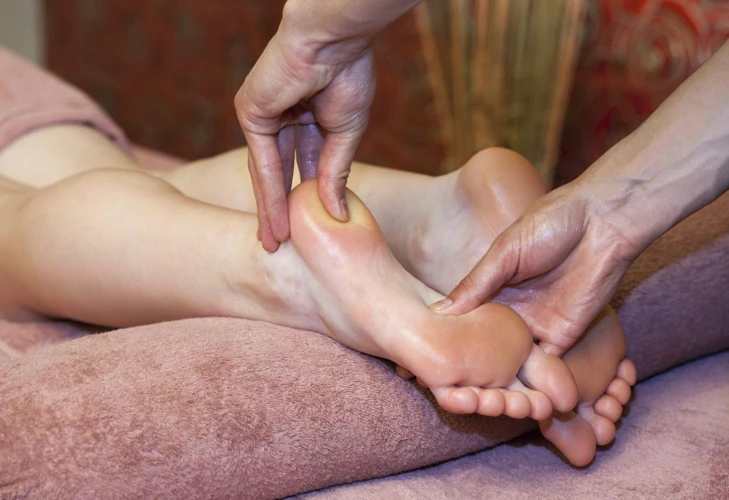
📚 References
- Mayo Clinic – Massage Therapy
- Healthline: 3 Reflexology Massages for Pressure Points on Feet
- NCCIH (NIH): Massage Therapy – What You Need To Know
⚠️ Disclaimer:
This article is for informational purposes only and does not constitute medical advice. Always consult with a licensed healthcare provider or certified massage therapist before beginning any new treatment, especially if you have pre-existing health conditions or concerns.
